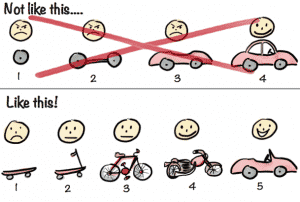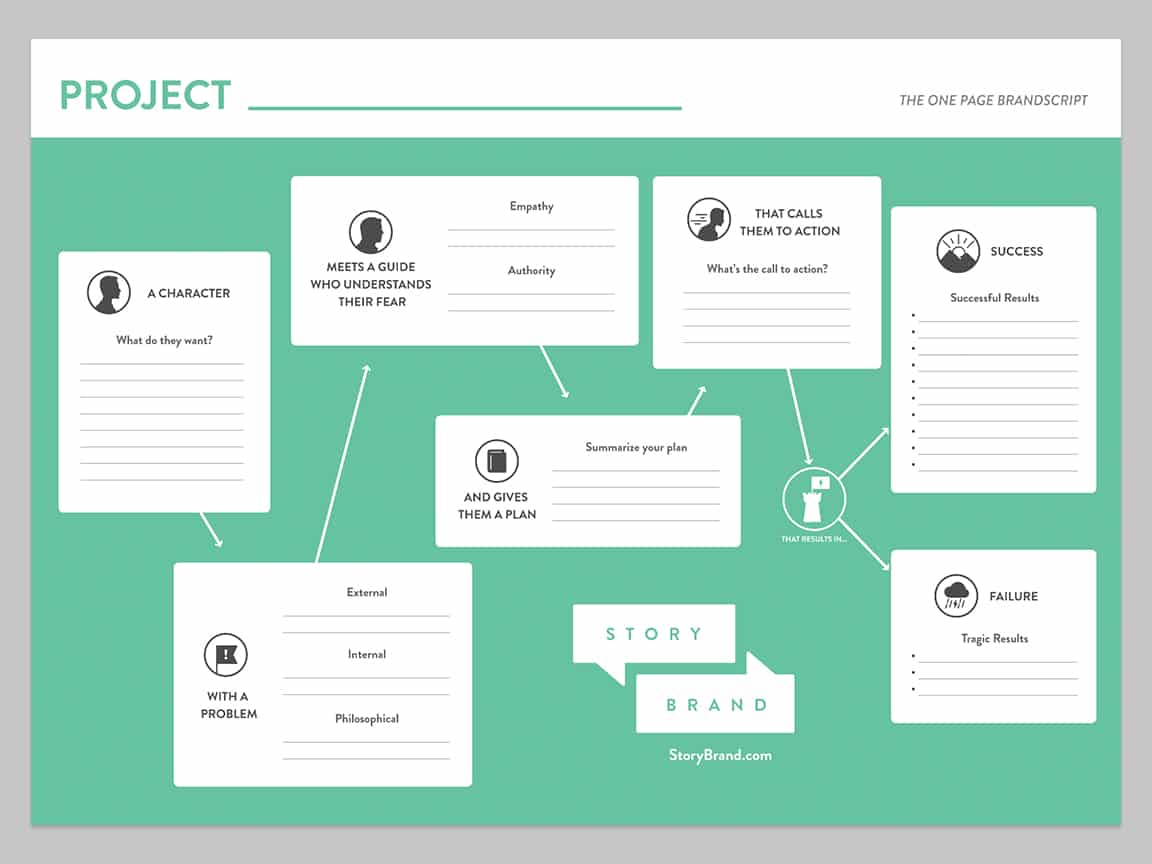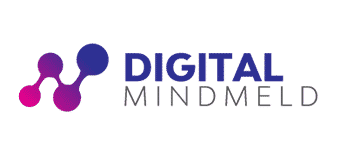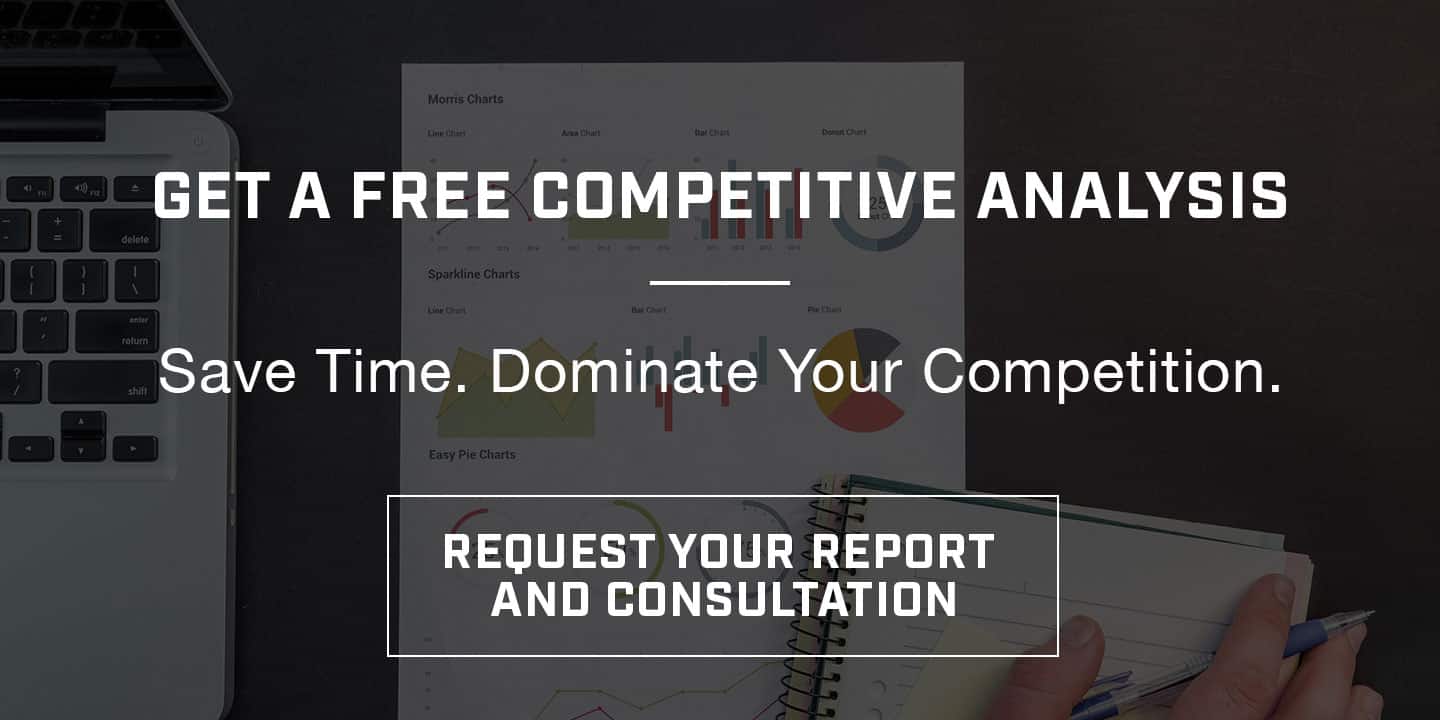It’s football season — my favorite time of year.
As you route for our favorite squad, have you ever wondered what gives the winning team a competitive advantage? Is it a solid defense? A high-powered offense? Or their home-field advantage?

The victors are the ones who leverage their competitive advantage at the right times. Underdogs pull off shocking upsets, and championship teams win consistently by tapping into this strategy.
In business, incumbents who rest on their laurels can lose market share to new, hungry, more agile companies. If you’re paying attention to your win-loss analysis, you’ll probably notice trends in lost opportunities.
Gaining a competitive advantage is crucial to the longevity of your business. If you’re looking to step up your game, check out these four strategies to gain an edge over your competitors:
1) Create a better product or service
“Every company should work hard to obsolete its product line… before competitors do.” – Phil Kotler.
Keeping up with the ever-changing needs of today’s customers requires you to look for ways to improve your product continuously. Imagine if football franchises stopped drafting players to fill critical positions. Would they remain competitive in a few years?
Here are three principles to building better products.
- Gather customer feedback. Unless you’re building something nobody will use, your customers should be the focus of your product development efforts. By identifying needs and validating assumptions, you increase your probability of hitting the mark with your product. Here are some excellent Customer Development questions to use to gather feedback.
- Use customer insights. Turning data into action is a characteristic of insights-driven businesses. In addition to the qualitative data from customer feedback, you can use the number of support tickets associated with a specific feature as a measure of dissatisfaction.
- Build a skateboard, not a car. The way you make better products is more important than the final product itself. If you spend much time producing a final product, your customers will get frustrated and find new vendors.

As Henrik Kniberg brilliantly illustrated, the right way is to start with a skateboard, so your customers use it as you work your way to the finished product. By building the functionality that customers can use along the way, you turn frustrations of waiting into delight.
2) Make a great first impression
Let’s face it. People make decisions on whether you’re smart, charismatic, or trustworthy, within 12 seconds of meeting you. The same applies to the interaction with your organization.
Unless your company has adopted the inbound methodology and generating leads around the clock, you’re probably relying heavily on your sales team to generate leads. If so, you can stand out from the pack by using video emails.
Video emails are short videos your sales team can use while they are prospecting to deliver a better and more “human” experience than your competitors. With cameras being a part of every device, there’s no excuse why you aren’t adopting a modern video strategy.
Think about some of the situations where you can use video emails. You can enhance your initial outreach to build rapport and to add value. You can send personalized follow-up videos with leads from trade shows.
Have a prospect who goes dark after you send a proposal? Try posting a video that re-engages them in the conversation.
I know what you might be thinking, it’s going to be impossible getting my sales team to send video emails. With some training a little practice, your sales reps will be on their way to delivering better experiences.
With the HubSpot CRM and sales tools, you’ll make it as simple and easy as possible for your team. Watch this video, and you’ll see for yourself.

Now let’s look at how your content strategy can make a great first impression.
First, you have to put yourself in the shoes of your prospective customer. How did they first hear about you? What is the context in which they are engaging with your company?
When you practice this level of empathy, the way your entire organization thinks and communicates will change. Instead of forcing prospects to buy when they’re not ready, you help them get the information they’re looking for to make an informed decision.
To help you walk a mile in your customer’s shoes, here’s a helpful tool from Story Brand. This exercise helps your organization look beyond demographics and think about the aspirations and internal struggles throughout their buyer’s journey.

Try applying this framework, and you’ll be on your way to creating more useful and helpful content for your audience at every initial touchpoint. Do this better than your competitors, and you’ll increase your chances of winning in highly competitive situations.
3) Be the first to connect with your inbound leads
Chances are, your prospect has already done some preliminary research to create a shortlist of potential vendors. When they’re ready to engage with your sales team, being the first to respond increases your chances of qualifying them. Leads who are followed up within the hour is sixty times more likely to have meaningful conversations than those who are followed up after 24 hours.
If you’re experiencing low lead-to-opportunity conversions, you’re not responding to them quickly enough. Chances are, you’re manually assigning leads to your sales team, which delays response time and tremendous effort goes into trying to connect with the prospective customer.
What you want to be hearing from your prospects is, “Wow, you’re the first one to call me back.” The quick response time not only allows your sales team to build rapport before your competitors, but it sends a positive signal for how responsive you’re going to be when your customer needs help.
Here’s a better workflow to drastically shorten your response time.
- A webform is submitted. Based on the information, the lead is assigned based on territory or vertical.
- The lead is assigned to the appropriate sales rep—automatically.
- The prospect receives an email from the assigned sales rep with the next steps and a link to schedule a time most convenient for them.
- The sales rep gets an assigned task and a text message immediately.
- The sales rep views the contact in the CRM to research the context of their interaction, does a quick search in Google, views the LinkedIn profile to identify a common interest for rapport-building.
- The sales rep calls within minutes and moves them through the sales process.
Presto, you’re invited to the dance early, and you gain a competitive edge.
4) Build customer loyalty
When you don’t engage customers after the purchase, you’re susceptible to your hungry competitors swooping in to eat your lunch. How do you combat this? You focus on building loyalty to make your business immune to customer attrition.
I know building customer loyalty is much easier said than done—especially if you don’t have a customer engagement strategy in place. That’s why modern Customer Relationship Management (CRM) software is crucial to building loyalty.
Here are some of the things your CRM should be doing:
- Create collective intelligence with customer data. Everyone in your organization should have access to every customer interaction so they can quickly understand the context of their frustrations to fix it.
- Identifying triggers that affect customer health. Whether it’s a support ticket goes too long without being solved or a customer viewing your terms and conditions page multiple times, your team should is alerted so they can investigate.
- Logging activities automatically. Instead of spending time manually logging calls, emails, and meetings, your team should focus on solving customer issues.
- Notifying your customer service team of upselling and cross-sell opportunities. If your customers visit your new product page or pricing page, there’s a pretty good chance they’re looking to buy something. By notifying the assigned customer success manager, they can reach out with a timely call to help them along.
- Segmenting customers so you can deliver personalized messages—automatically. A new customer has different needs than long-time customers. If you sell to different verticals, you’ll want to tailor your tech-touch customer emails, so you’re delivering relevant messages.
Now that you’re on your way to building customer loyalty, your work far from complete. The holy grail of any modern business is to build customer advocacy that increases word-of-mouth referrals.
One way to measure advocacy is by conducting a Net Promoter Score (NPS) survey. If you’re new to NPS, it asks two simple questions: 1) How likely would you recommend [your company] to a friend or colleague?; and 2) What is the reason for your answer?.
With data you capture, you can identify your promoters who are good candidates to give you a referral or testimonial. The ones who give low scores should get a call from your CEO or executive, so you walk them off the ledge and guide them towards becoming your advocate one day.
It’s Game Time
If there’s one take-away from this post, it’s that your core strategy should center around your customer experience. By doing so, your people, process, and technology align to improve the responsiveness and quality of your touchpoints. Instead of obsessing over what your competitors are doing, focus on delighting your customers at every stage in the buyer’s journey.
As any championship football team knows, you can’t rest on your laurels. You have to practice a growth mindset to keep getting better. Ultimately, it’s not about being better than anyone else, it’s better than you used to be.
If you’d like help in creating a sustainable competitive advantage, request a free consultation here.





